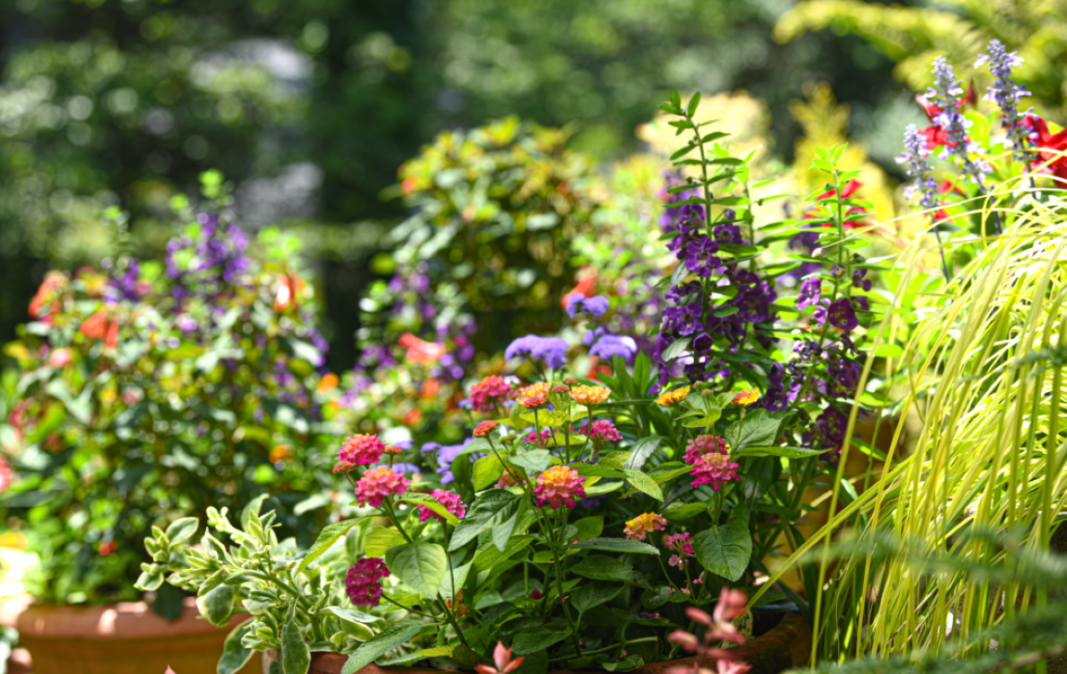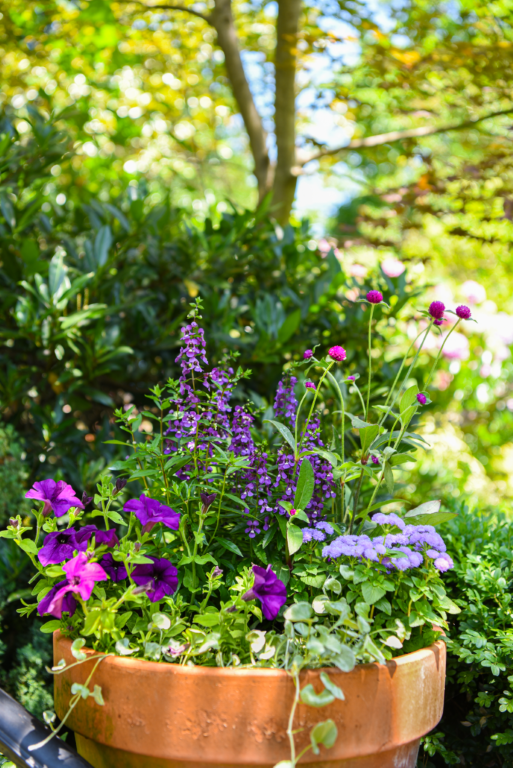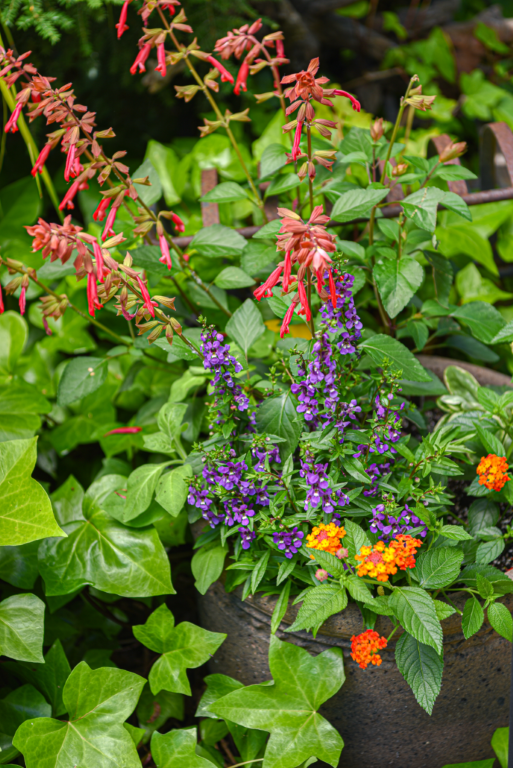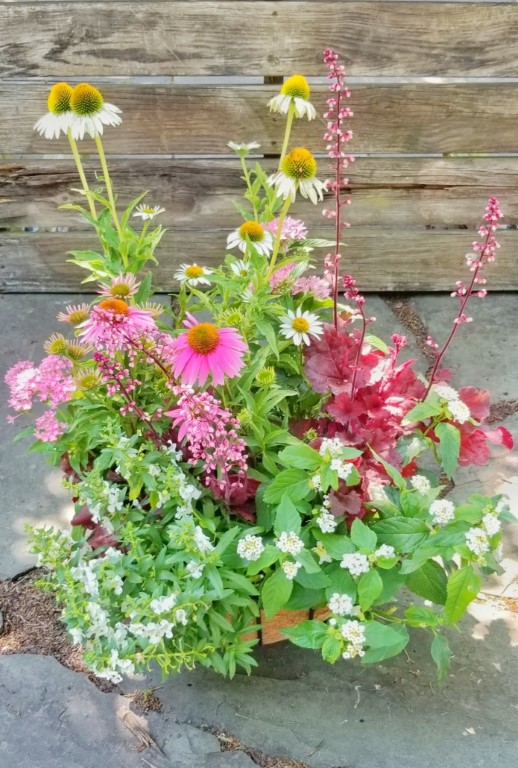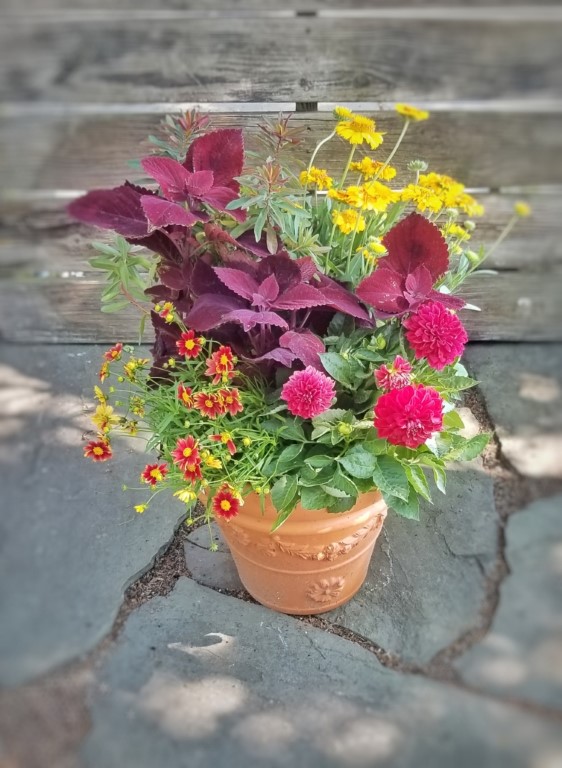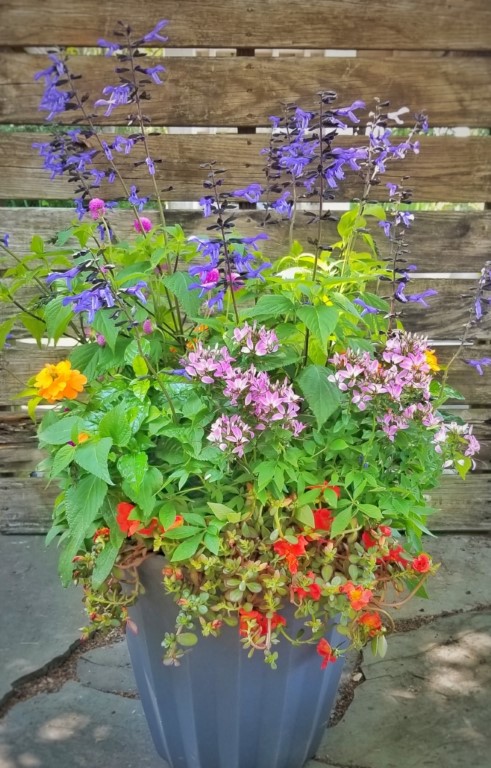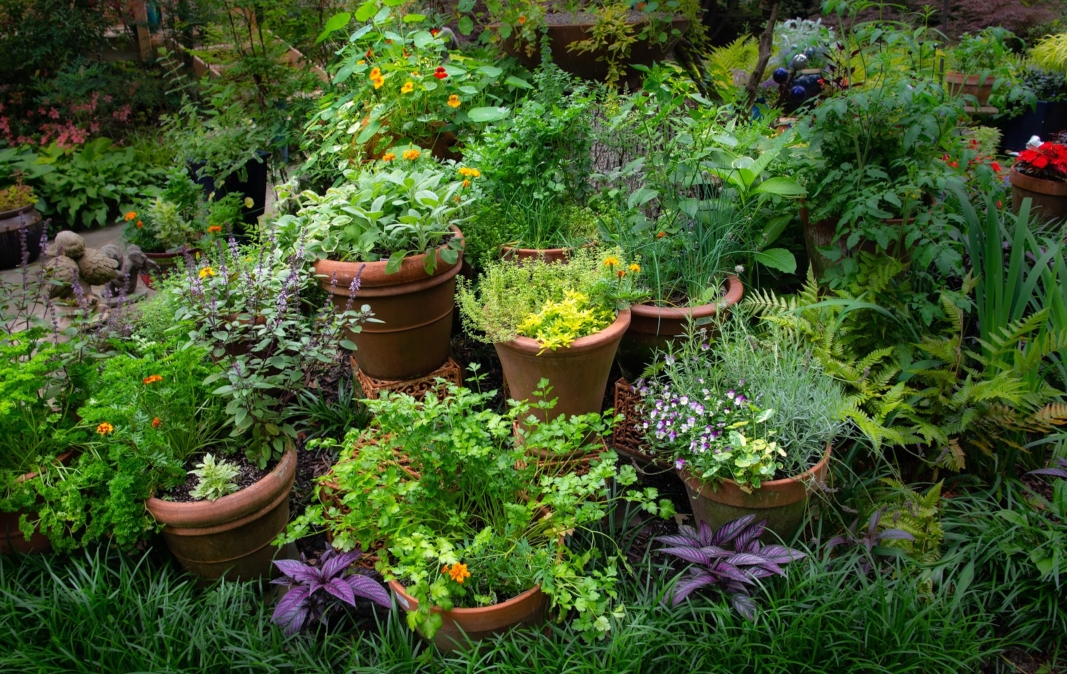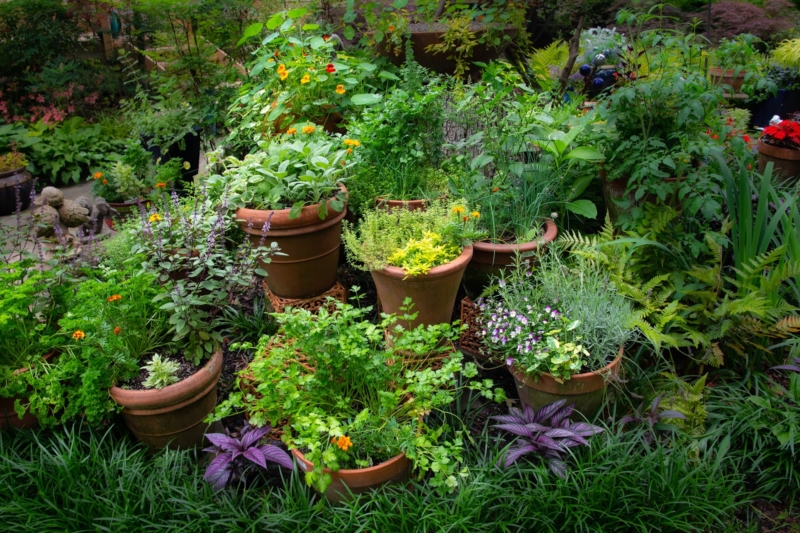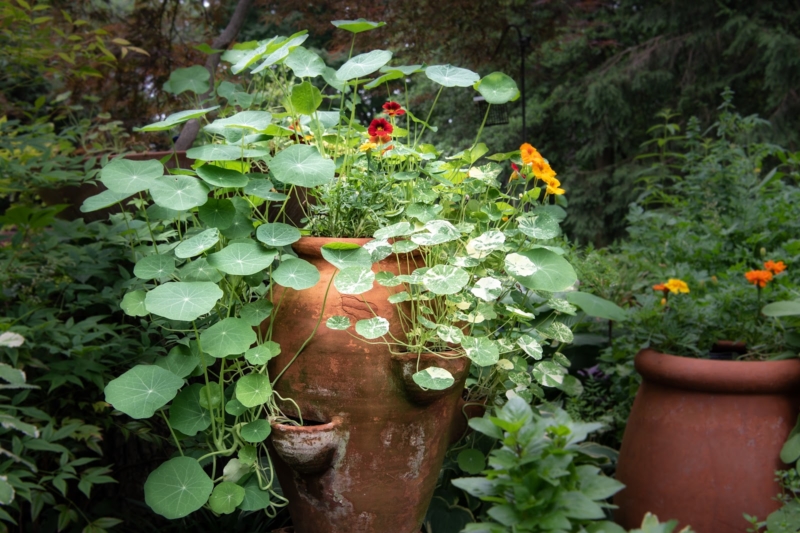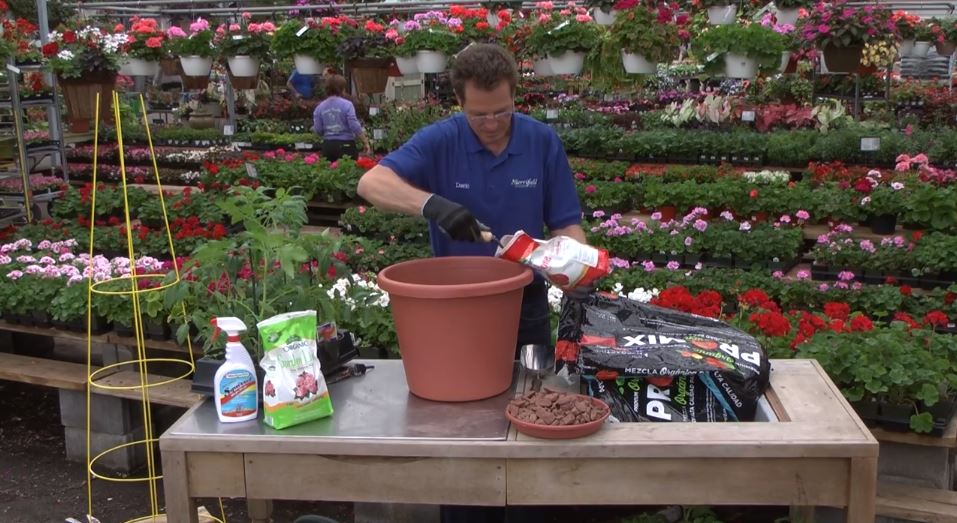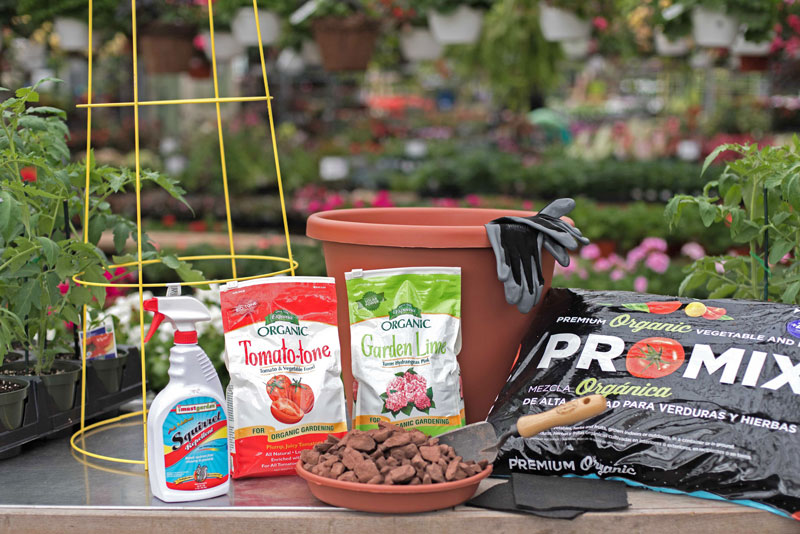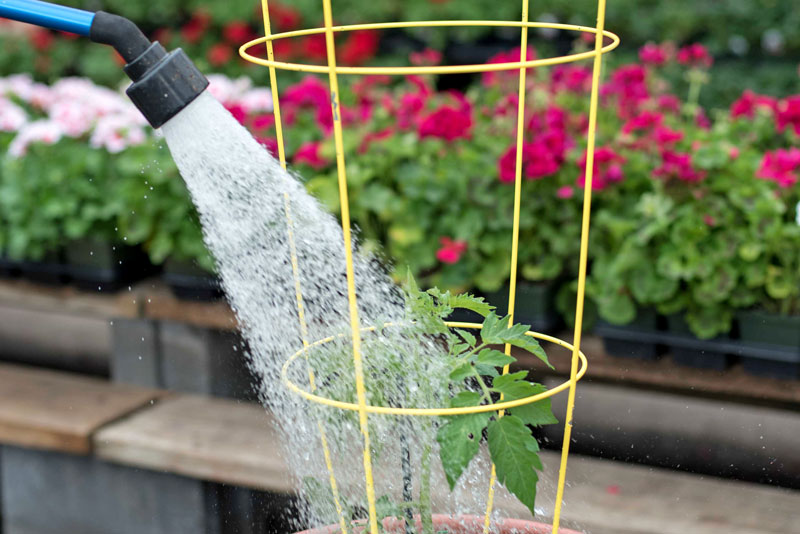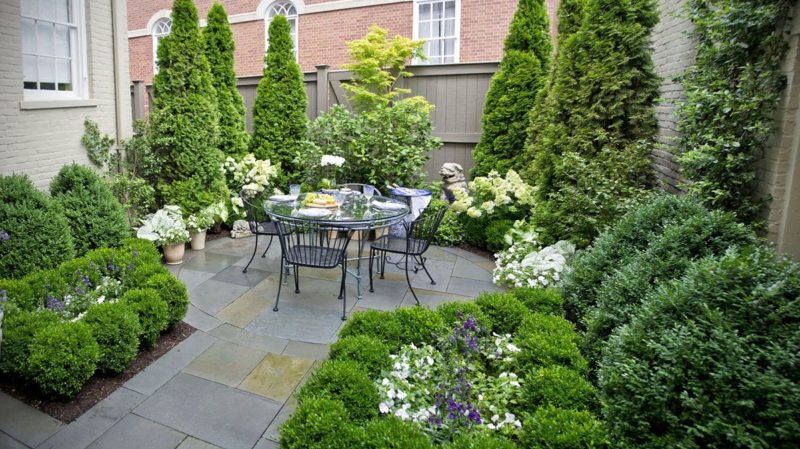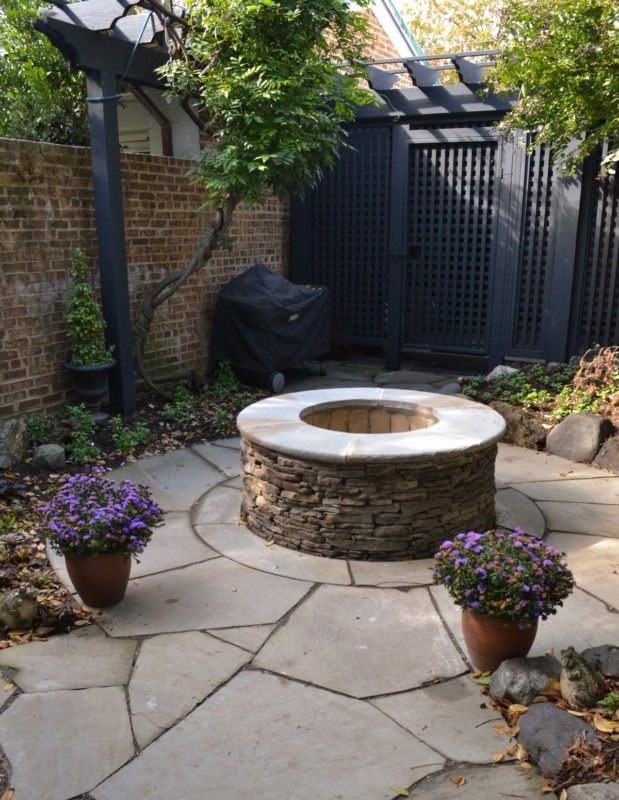Mary Kirk Menefee, Merrifield Landscape Designer
Are cooling temperatures and shorter days making you think of a cozy gathering around a fire? It’s no wonder. Fires have a primal draw. They are a source of warmth, comfort and hospitality. They engage all of our senses, and as a result, seep into our memories.
For me, a crackling fire harkens back to so many wonderful times and places. When I was very young, my grandmother would take my sister and me to a spot of open land near a creek and teach us how to build a little campfire and roast hotdogs and marshmallows on sticks. She kindled not just fire but a love of the outdoors. Later there were campfire sing-a-longs at summer camp, bonfire pep rallies and gatherings with friends around all manner of campfires and fire pits.

As a designer, I love to have to the opportunity to bring this kind of experience home to my clients. This is good thing, because fire features have become very popular. Every year, I seem to get more requests to create space for a fireplace, fire pit or chiminea in a landscape. Everyone seems to be craving that warm, hospitable place within the garden. What’s more, the warmth of a fire extends outdoor fun well into the late fall and even winter months. You don’t have to move to California to enjoy year-round outdoor living!
What you do need to do is apply a little thinking, planning and creativity. Options for fire features are nearly limitless, so if you think only of a raised stone circle, think again. As you can see from the photos below, the fire features Merrifield has built in the past few years range from elaborate outdoor living rooms, complete with fireplaces, to rustic camp-style pits to movable fire bowls. Clients who have completed such installations tell me their fire features tend to be some of the best-loved and most-used of their landscape additions.

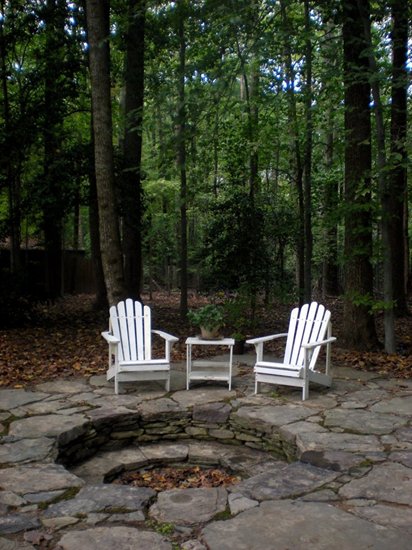
Looking beyond the DC area, there are even more creative options to discover. In the western US and Australia, where wood-burning fires are largely prohibited, many people opt for gas fire features with sleek, modern designs. With the ability to simply turn them on and off, they fit into all kinds of unexpected places. Check out Pinterest and Houzz for some stunning examples. Maybe you’ll end up in the vanguard of homeowners bringing this trend to the East Coast. Whatever you do, don’t limit your imagination. A Merrifield Garden Center designer can help make your dream a reality.
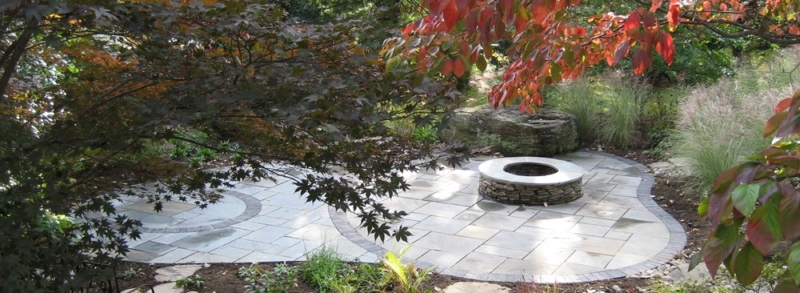
When working with a designer on your fire feature, the first two things he or she will consider are the available space and how you intend to use it. While built-in fire pits and fireplaces generally need generous surrounding hardscapes and to be positioned 20-25’ from structures, such as your house, portable fire bowls and chimineas can be used in smaller, closer spaces. In general, it is not recommended to put fire features under roofs or pergolas or on top of wood decks (and yes, believe it or not, that is a common question). Wood burning fire features are ideal for people who want a campfire experience, gas features are better for those who crave the ambiance with a bit more simplicity.
A few questions a designer might ask when planning your fire feature are:
- How much space do you have/want to dedicate to this particular feature?
- Do you need this space to be convertible (dedicated to fire for small gatherings, open space for large-scale entertaining)?
- Is there any space 20-25’ from a structure?
- Should the space be an extension of your home or a destination out in the garden?
- How many people would you like to have gathered around the fire?
- Will you be using the fire for cooking?
- What factors (e.g., hassle of getting it started, safety concerns, no dry place to store firewood) would prevent you from using the fire feature often?
Once you’ve honed in on the location and the type of fire feature you want, it’s time to think about feeling, style and materials. What feeling do you want to create? The memory of a cozy campfire? A luxurious resort? A romantic retreat? Think about whether the space should feel enclosed and intimate or open and exciting. What aesthetic choices will contribute to that feeling?
As you’ve seen, aesthetics for fire features are as varied as any home or garden. Ideally, the style and scale of your fire feature, home and garden would all be the same—yours! If your home tends toward cozy and rustic, with exposed beams, lots of natural materials, and a loose woodsy garden, a grand brick chimney might seem out of place. However, it might be the perfect thing for a more formal home with a white-columned pergola and parterred herb garden.
To point to a more concrete example, recently, I designed an outdoor living area with a fireplace to be a true extension of a home. Because the home sits on a steep hill within a woodland of tall trees, the living area and the fireplace needed to be bold, with large proportions, to be in scale with their surroundings. They also needed to be one with the house to avoid looking tacked-on. To get this seamless look, we used a stone veneer that was already on the house to cover the fireplace and adjacent retaining walls. The bold proportions come from chunky, rough-hewn stone for benches and wall caps and large-scale pavers for the patio that echo the colors in the veneer. The result is very cohesive, as though the outdoor area was built right along with the house.
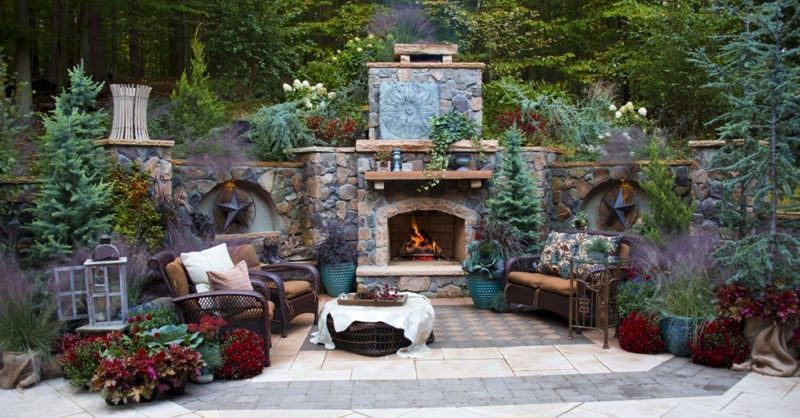
What are the stylist hallmarks of your home’s character that you can transport into the landscape with a fire feature and surrounding patio or garden?
Here are a few aesthetic notes to look for:
Materials
- Stone – notice color, texture and visual weight
- Brick – notice color, finish and age
- Stucco/Dryvit – notice color and relationship to other materials
- Copper – notice patina and degree to which it gives the house character
- Wrought Iron – notice it’s shape and stylistic details
Style
- Formal – look for symmetry, heavier, traditional materials, classical details
- Rustic – look for natural materials and details, situation within the landscape, feelings of “woodsiness” or “beachiness”
- Modern – look for clean lines, spare or quirky details, asymmetrical and nontraditional spatial relationships.
Having a location, type, scale and feeling in mind and a few stylistic details for inspiration, you are ready to create the perfect place to warm those chilly evenings in the coming months. Invite some friends … open a bottle of wine. What could be better?


